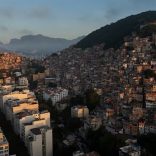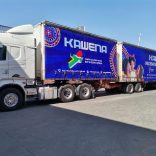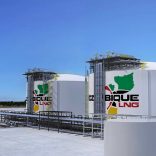US envoy plays down Africa tariff, visa concerns, reaffirms Lobito rail commitment
CPLP: Fourth largest economic zone in world – Watch

Screen grab: TPA
The Community of Portuguese Language Countries (CPLP) has the fourth largest Special Economic Zone (SEZ) in the world, with Brazil (47%), Portugal (22%) and Cabo Verde (10%) leading the way in terms of territorial area.
According to data from the Directorate for Economic Affairs of the CPLP, to which Lusa had access on the sidelines of the 14th Water, Energy and Environment Forum, which is taking place in Luanda, the total area of the exclusive SEZ of the countries in the Portuguese language bloc is around 7.9 million square kilometres.
After Brazil, Portugal and Cabo Verde come Mozambique (8%), Angola (6%), Equatorial Guinea (4%), while Guinea-Bissau, Sao Tome and Timor-Leste occupy the next positions with 1% each, in terms of territorial shares of the community’s SEZ.
The CPLP’s economic pillar, whose agenda is based on seven axes, namely trade promotion, investment promotion, institutional and business capacity building, among others, is an initiative of Angola’s rotating presidency.
At this forum, promoted by the Young Entrepreneurs Organisation of the European Union (JEUNE), in partnership with the management of the Luanda-Bengo SEZ, it was also pointed out that the CPLP, with approximately 300 million inhabitants, is the fourth largest producer of gas and has 14% of the world’s freshwater resources.
Alberto Carvalho Neto, president of JEUNE, highlighted the working partnership with the SEZ, pointing out that the meeting would allow us to discuss “without taboos” the challenges that exist in terms of access to energy, water and environmental projects, with the aim of creating sustainability and inclusive growth.
The director of Infrastructure and Maintenance at Angola’s SEZ, Aguinaldo Delgado, said that the public institution currently has 132 megawatts of energy available and consumes only 68.
“If we take into account that the collection and distribution of water is directly related to the need for energy, whenever we have energy problems, we necessarily have problems with water,” he emphasised, refusing to accept that the situation constrains investment in the unit.
The Angolan SEZ currently has 136 industrial units, 89 of which are in operation.













Leave a Reply
Be the First to Comment!
You must be logged in to post a comment.
You must be logged in to post a comment.